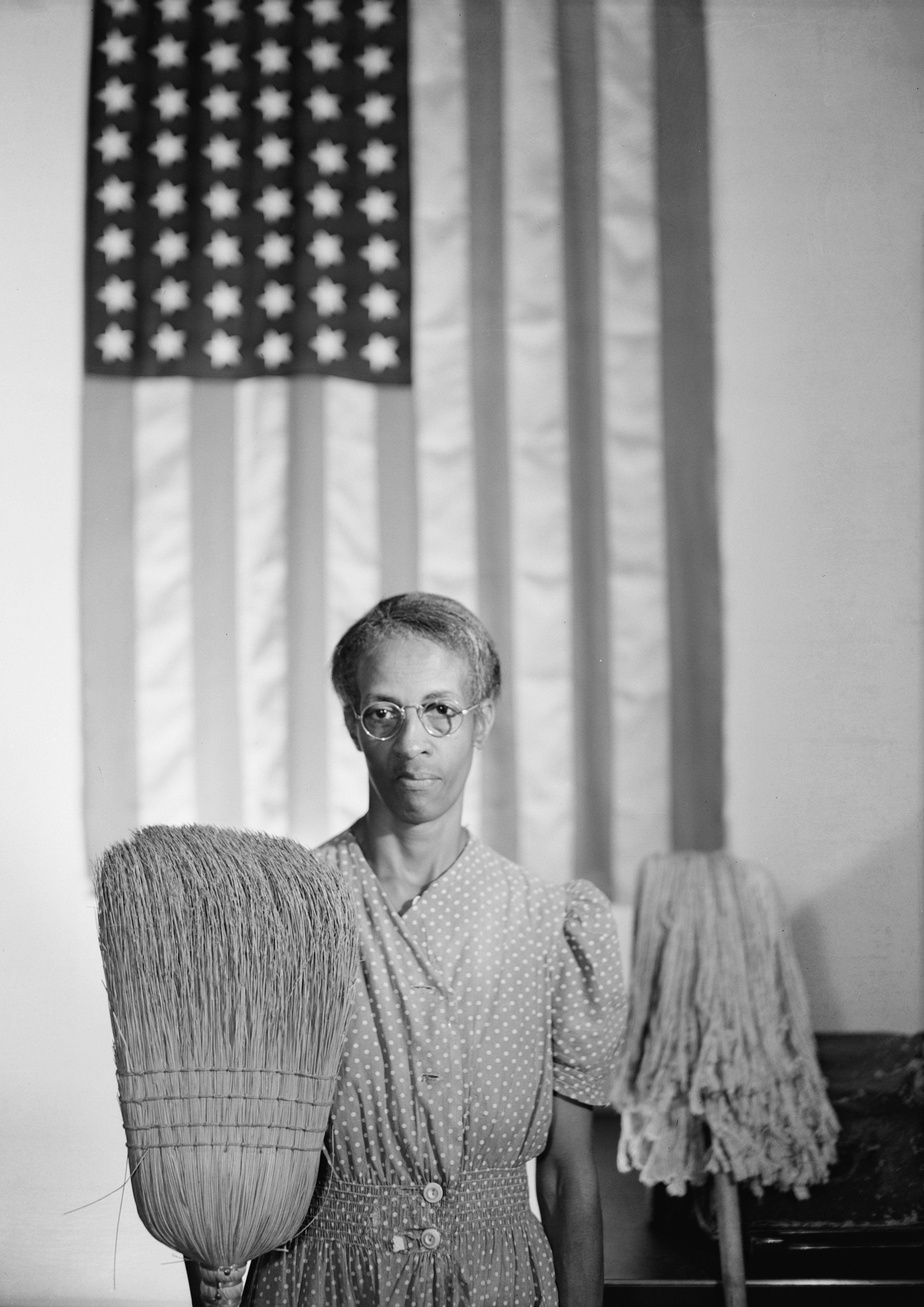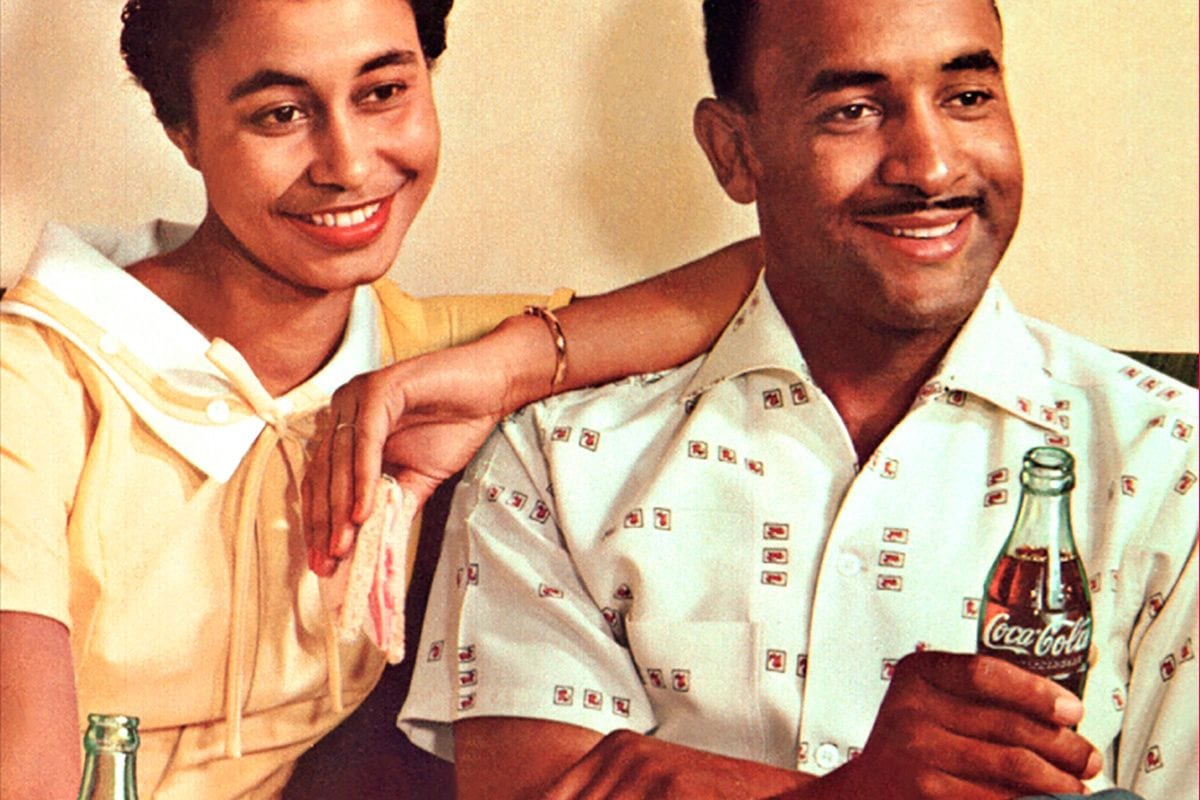
Years ago, near the beginning of what would become an 18-year span as a corporate communications professional for the U.S. Postal Service, I felt giddy enough about my long-term prospects in the field to pursue acquiring some official credentials for it. I took a couple of classes at a local university in a soon-abandoned attempt to earn a master’s degree in public relations. The text for my entry-level class was Stuart Ewen’s PR! A Social History of Spin (Basic Books, 1996), which introduced me to the seductive work of pioneers like Ivy Lee and Edward Bernays in shaping and driving public opinion on various industries, products, and causes.
It’s an eye-opening book about how the most effective and innovative early spinmeisters served their corporate and governmental clients. But it never mentions Moss Kendrix. Nor did I come across any reference to Kendrix at any point during my public relations career with the Postal Service, which took me to three major media markets and put me in contact with various fellow spinmeisters of color within and beyond my employer.
I’d never seen his name in all my years as a journalist and essayist dissecting the intersection of history, race and culture, even when I wrote about Black entrepreneurs like the late Reginald Lewis and the founders of Essence magazine. It didn’t come up throughout any of my accompanying research and study of Black pop life and culture — not in a single scholarly tome, not in a single exhaustive museum exhibit.
Not until Brenna Wynn Greer‘s Represented: The Black Imagemakers Who Reimagined African American Citizenship, did I ever know Kendrix even existed, or have a sense that Black public relations and marketing in fact had a long, complicated history.
I always thought it was an offshoot of the civil rights movement, as if corporations and governmental bodies didn’t realize until some point after Martin Luther King, Jr. was murdered that they needed some Black goodwill in their pockets. I always thought it was around that time that general-market entities finally began to court Black consumers, and Black-centric agencies and practitioners conveniently emerged to compete for and receive the outsourced work of courting those consumers. (As opposed to companies and marketing agencies hiring those folks directly and folding them into their general operations.)
*** We interrupt this article for a brief message from our sponsors. That would be you, dear readers. ***
little blue robot by vinsky2002 (Pixabay License / Pixabay)
Greer constructs a narrative of how, in the years before and after World War II, Black communicators successfully created the notion that Black people should be seen as invested participants in the American Dream. Further, they would value being recognized as such by being treated like loyal, intelligent consumers, just like white folk. Kendrix is the de facto hero here, as Greer chronicles his rise from ambitious undergrad to a man seen to have his finger on the pulse of what Black people wanted. He knew how to tap into their buying power and engage their full (no pun intended) buy-in.
Greer places the first stirrings of this impulse with the US government’s recognition that Black folks needed to be fully invested as participants in the programs of the New Deal in the 1930s. Johnny-on-the-spot was Kendrix, a bright young striver in Atlanta who, even as a student at Morehouse College there, had established himself as a savvy communicator and networker.
The National Youth Administration [NYA] took him on to execute marketing of its programs to Black audiences in the South, and he dove in with both feet. He wrote op-eds, lined up celebrities, and staged photo-ops featuring the Black best and brightest to promote NYA’s services. Along the way, he was instrumental in marshaling recognition of the power of Black media — and, crucially, the patriotism of Black people on the eve of WWII despite their second-class status. He established this through National Negro Press Week, a tradition that continues to this very day (albeit in a much different form, given the state of Black print media).
None of this would have been possible, argues Greer, had not Black people already perceived their economic power as consumers. She points to various don’t-buy-where-you-can’t-work boycott campaigns, and direct actions such as the 1955-56 Montgomery bus boycott, and lunch counter sit-ins of the early ’60s. Black recognition of their potential economic impact, and corporate acceptance of it, in fact predates even these movements, if the experience of the then-nascent record industry is any marker.
Kendrix’s genius was seeing how consumerist impulses could be extrapolated into baby steps towards fuller social recognition of Black folk, while helping enrich companies that wanted to reach and engage Black audiences. With that insight, he was the right person at the right time to gain the ear and confidence of the government, even as his editorial tone shifted through the years according to the times. “When in college,” writes Greer, “he consistently, persistently [emphasis Greer’s] laid out the case supporting African American’s citizenship…When representing the New Deal, he no longer argued their status but rather encouraged African Americans to conceive of themselves as obligated to aid in the nation’s recovery by virtue of their citizenship. When the United States went to war, Kendrix joined the many African Americans who held the government to its obligations to them [emphasis Greer’s], by virtue of their citizenship.”
But lest you think Kendrix and his fellow image-makers were acting primarily to uplift the race towards some lofty goal, think again. At numerous points throughout Represented, in both the main text and the footnotes, Greer takes pains to disavow us of such hi-falutin’ notions. “Through their enterprise,” Greer writes in her introduction, “black image professionals made the market work for racial progress on their way to making money; they did so because they understood these projects — advancing the race through media representations and making money — to be indivisible.”
One such image-maker Greer studies is not someone you’d automatically include in that number. We think of the photographerGordon Parks as a prodigious and insightful artist, which of course he was, but in his early professional days he was trying to earn a living and to balance those urgencies with his burgeoning activist instinct.
Parks was waiting tables on the Northern Pacific Railway in the ’30s when — inspired by New Deal photographs featured in Life magazine — he took up the camera. After relocating to Chicago in 1940, his photography — both studio work and street shots — caught the attention of Roy Stryker, who headed the Farm Service Administration, which was responsible for many of the photographs which initially inspired Parks. Stryker brought Parks aboard as the FSA’s photography work morphed into the Office of War Information [OWI] upon US entry into World War II.
Parks’ job at OWI was ostensibly simple: take pictures of Black folks willfully participating in the war effort and in the American way of life as a whole. And this he did; Greer includes Parks’ photo of a smiling young Black woman getting her Rosie the Riveter on as a welder. But Parks’ documentarian impulse also shone through at times. One of his most famous photos ever, American Gothic (1942), featured a Black woman holding a mop and broom with a giant American flag as a backdrop. But Stryker didn’t choose to use the photo for OWI’s campaign, and it didn’t surface, as far as Greer has determined, until well after the war.

Parks reeled in his righteousness, subsequently photographing the woman in domestic scenes more in tune with the OWI mission. Indeed, the vast majority of his OWI output captured Black people in the simple moments of everyday American life. This work, says Greer, invested portrayals of Black life with a measure of decency and propriety not always seen at the time, while helping the federal government achieve its propaganda ends. Thus was the bargain, which one might or might not choose to label a Faustian one: to find ways to represent Black agency and dignity while fulfilling the mission of the party cutting the paychecks, or to tell the hard truths and risk censure and possible joblessness. It’s a tightrope image-makers of color have been walking ever since.
But John H. Johnson never showed much conflict about it at all. Of course, he wouldn’t; he was an entrepreneur. He made magazine publishing his full-time occupation in 1943, and conducted shoe leather market research on the mindset of the Black reader/consumer by walking the streets of Chicago’s South Side.
Greer notes two key lessons Johnson learned. First, Black people had more consumer strength than mainstream businesses gave them credit for, especially as a result of expanded employment during World War II. Second, the only magazine in the same league of reaching Black eyeballs with his text-dominant Negro Digest was Life, with its oversize pages and storytelling photography (again, note its influence on Parks). Johnson easily surmised the potential of a magazine presenting, as he put it, “Black [emphasis his] words and pictures, and a holistic presentation of the Black image.” Thus Ebony launched in November 1945, at a most opportune time for making the most of the Black consumer’s desire to finally be taken seriously (and with way more than just a nod to Life’s look and feel).
Johnson bet on himself in a big way by launching Ebony as an ad-free publication. He told the world Ebony would not accept ads until it reached a monthly circulation of 100,000. That was an astounding number, considering no one thought much of the prospects for any previous Black magazine. The gambit’s purpose was to assure potential advertisers that Ebony would be a stable-enough concern and could attract a sufficiently large audience to justify their advertisement investment.
To speed up the process of getting to that magic number, Johnson turned to an age-old form of attention-getting: showing off women’s bodies. From day one, Ebony featured photos of (light-skinned) Black women in swimsuits and similarly revealing outfits, both on its cover and inside its pages. One could, in retrospect, decry such a cynically sexist m.o. (especially so, combined with the magazine’s portrayal of women as happy homemakers and housewives throughout its editorial coverage), or point to it as recognition of a new sense of agency for Black women, or just be happy to see Black pinup models instead of white ones for a change.
It worked. The March 1946 issue, with the pop star Lena Horne in a gently suggestive pose on Ebony‘s first full-color cover, sold 275,000 copies, thus delivering on Johnson’s promise to advertisers. They’d eventually take him up on running ads in Ebony (albeit slowly at first), but Johnson kept the cheesecake going anyway. The practice lived on in the sister publication Jet, widely known and flipped through for its “Beauty of the Week” photo of a shapely Black woman in a swimsuit, conveniently located near the centerfold.
The emergence of Ebony provided the perfect venue for Kendrix’s greatest triumph. By the late ’40s, Kendrix had hung out his shingle and was seeking corporate PR contracts, a major project to promote the African nation of Liberia having blown up in his face. He finally landed one with Coca-Cola Corporation, which was based in his hometown of Atlanta.
When Stephanie Capparell‘s The Real Pepsi Challenge: The Inspirational Story of Breaking the Color Barrier in American Business was published in 2007, it was hailed as an inspirational addition to the long chronicle of Black firsts. But not long after Pepsi had beaten its main competitor to the punch by establishing a sales force to target Black consumers, Kendrix (whom Capparell mentions only once, in passing) was building towards the same effect at Coca-Cola, in effect creating a Black first of his own.
His pitch to Coca-Cola was two-pronged: Black consumers should be seen as a “special” market, requiring a distinct marketing approach catered to their specific interests and priorities. And only a Black marketing pro like him could help the company crack the code.
Coca-Cola, tiring of seeing Pepsi own the soda pop loyalty of Black consumers, took Kendrix up on the idea, hiring his firm in 1951 to court and make inroads into the Black market. The overall campaign included a lot of now-familiar elements of any corporate outreach campaign: it put Black faces in key customer contact positions; lined up celebrity endorsements (Kendrix had amassed an impressive contacts list by then), and: featured Blacks in ads enjoying the product. But these weren’t coonish ads like other products had used, with demeaning visual representations of blacks. These were tastefully done tableaus, often echoing the very ads Coca-Cola used in “white” publications.
The subtle effect of these ads, many of which were placed in Ebony throughout the campaign, was to further advance the normalization of Black family life in the minds of mainstream companies and in American mass media as a whole. The cover of Represented is a detail of one such ad from 1955, with a nicely-dressed and coiffed Black family sitting on a sofa with food in front of them, all smiles and looking off into the distance, each of them holding a bottle of Coca-Cola.
The historical importance of Kendrix’s Coca-Cola campaign cannot be overstated. To this day, every ad you see of smiling people of color, women, queer couples, elders, or people with disabilities takes a page from the template Kendrix established, whether they know it or not. And as it’s happened, the benefit has been two-fold. Not only have businesses been able to attract audiences they’d disregarded for years, but those communities have also extracted a sense of validation, as businesses realize their disposable income is just as green as any all-American white family’s. Thus, Black folks have every right to be included in a particularly all-American activity: the right to be marketed to. “I consume,” this mindset holds, “therefore I am.”
Greer perceives a dual-edged phenomenon at play: while it was novel to see Black consumers approached in a tasteful manner (indeed, at all), the separateness inherent in the special-market approach echoed the separateness throughout much of the rest of society. Much of the collateral developed for such campaigns didn’t challenge societal norms beyond merely, in essence, swapping out smiling white people for smiling Black people. Yet even that was a measure of progress, at least back then. “That the business of redefining African Americans as American generated flawed returns,” she writes, “demonstrates the consequences of pursuing racial progress through capitalism, an institution that relies on the reproduction of inequity. The question is how African Americans pursuing equality and civil rights in the postwar United States might have done otherwise.”
Which is why Greer maintains that Kendrix’s work, and that of his fellow image-makers, was a social breakthrough as much as a business one:
“Kendrix and other black marketers, including, most notably, Johnson, are unintelligible within … narrative frameworks because they were not activists or overtly connected to activist endeavors. They were dyed-in-the-wool capitalists, and proudly so… The form their capitalism took, however, is precisely the premise for their inclusion in the history of how African Americans combatted racism and pursued their civil rights.”
That is why Kendrix’s name, and Represented in general, belongs in any study of how Black business and economic enterprise has happened in, and changed America. (A worthy extension of Represented might be a deeper dive into the development of marketing to “special” communities and markets.) It also adds to a broader understanding into the role of visual images and mass media in the evolution of Black protest. This is a noble tradition that goes all the way back, in some respects, to Frederick Douglass). Indeed, this is where Greer was initially headed before she stumbled upon Kendrix. As for that master’s degree that never happened, I can’t say knowing about him back then would have encouraged me to grind it out, but it wouldn’t have hurt.
- Represented: The Black Imagemakers Who Reimagined African ...
- Brenna Wynn Greer - Columbia Journalism Review
- Represented: The Black Imagemakers Who ... - Amazon.com
- Brenna Wynn Greer
- Brenna Wynn Greer (@BrennaWynn) | Twitter
- About Brenna Wynn Greer
- Represented | Brenna Wynn Greer
- Brenna Greer | Wellesley College


